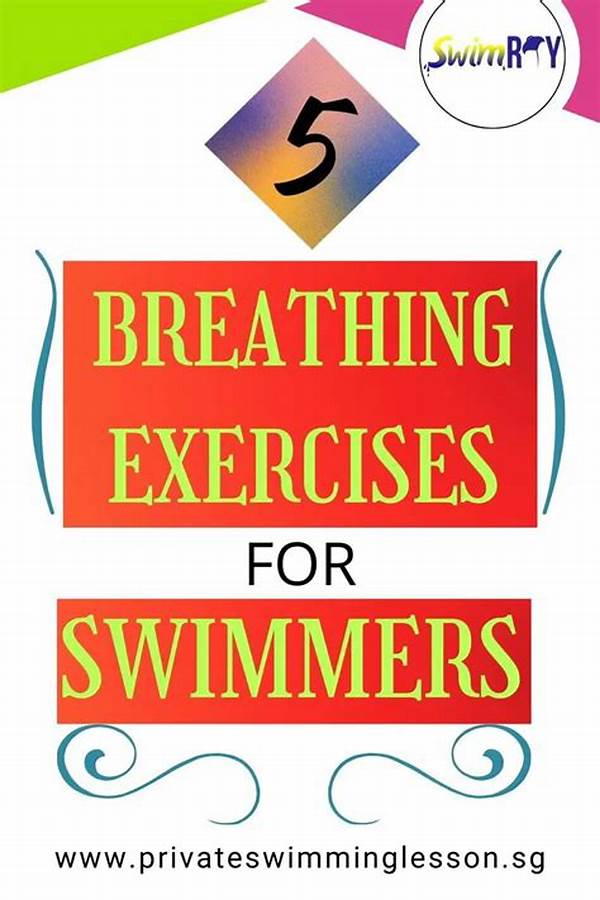Breathing Exercises For Swimmers

Imagine gliding through the water with the grace and speed of a dolphin. Feel the rush of adrenaline as you shave seconds off your best time, effortlessly. What’s the secret weapon? Breathing exercises for swimmers, the unsung hero of aquatic feats. In the vast ocean of swimming techniques, mastering your breath is the golden treasure many overlook. Yet it holds the key to unlocking your ultimate performance.
Read More : Breathing Exercises For Athletics And Racing
Every top swimmer has a secret up their sleeve, and today, we’re letting you in on it. Breathing exercises might not be the hottest topic at swim meets, but they are the unsung backbone of achieving peak performance. Why do Olympic swimmers seem to glide effortlessly? It’s not just their strong kicks or powerful strokes. It’s the mastery of their breath. Want to discover how they do it and bring a touch of Olympian magic to your workouts? Let’s dive in.
The Importance of Respiratory Training
Embrace the incredible advantages of breathing exercises, where science and sport coalesce. A study published in the Journal of Applied Physiology found that specific respiratory exercises improved athletes’ stamina by nearly 15%. Imagine cutting down your fatigue and propelling through those last few laps like a pro. Respiratory training strengthens the diaphragm and increases lung capacity, providing endurance that makes you unstoppable in water.
Techniques for Effective Breathing
Diaphragmatic Breathing
Diaphragmatic breathing isn’t just a fancy term to impress your swim buddies — it’s a game-changer. This technique focuses on deep, belly-centered breathing that ensures maximal oxygen intake. Picture your diaphragm as a hardworking muscle, ready to give you that extra burst of energy.
Rhythmic Breathing
Consistency is key in any sports endeavor, and rhythmic breathing helps maintain it. The technique involves timing your breaths with your strokes, creating a seamless dance between breath and movement. Consistent practice enhances oxygen supply, allowing you to swim longer and faster without fatigue.
Breathing Drills in Water
Bubble Blowing
Remember your first swimming lesson? Blowing bubbles might have been fun back then, but it’s a critical breathing drill now. This exercise helps you to learn how to exhale efficiently while swimming, conserving your energy and keeping you buoyant.
Bilateral Breathing
Ditch that one-sided routine for bilateral breathing, where you alternate the side of your breaths. This approach not only balances your stroke but also keeps you aware of your environment — a handy skill during open-water swims.
The Anatomy of Breath
When you breathe in, the diaphragm contracts and moves downward, creating space in the chest cavity. This allows the lungs to expand and fill with air. Breath control requires training your body to engage this mechanism effectively, even in the midst of a strenuous race.
Read More : Update On Tonight’s Champions League Schedule From Sky Sports Football
Common Mistakes and How to Avoid Them
Real Stories of Swimming Success
Meet Amy, a seasoned swimmer who transformed her performance by incorporating breathing exercises. Once plagued by mid-swim fatigue, Amy began diaphragmatic and rhythmic breathing drills. Over six months, her race times improved dramatically, marking her as a standout star in her competitive league.
How to Start
Ready to take the plunge? Start by incorporating breathing exercises into your daily routine. Here’s a beginner guide:
Benefits of Breathing Exercises for Swimmers
Start integrating these breathing techniques today and watch your swimming experience transform. Get ready to conquer the pool with saint-like patience and a shark’s determination. Breath by breath, stroke by stroke, you’re on the way to aquatic greatness. Dive into these exercises and swim your way to success. Happy swimming!
Tags:
Mastering the art of breathing exercises for swimmers could be your ticket to swimming prowess. What are you waiting for? Dive into the world of advanced breathing techniques today and elevate your swimming experience. Embrace this untapped resource to boost your endurance, maximize your speed, and foster unparalleled focus. Remember, every Olympian swimmer started from where you are now — a willing individual eager to learn and excel. Take a deep breath, and let your journey to swimming mastery begin!



